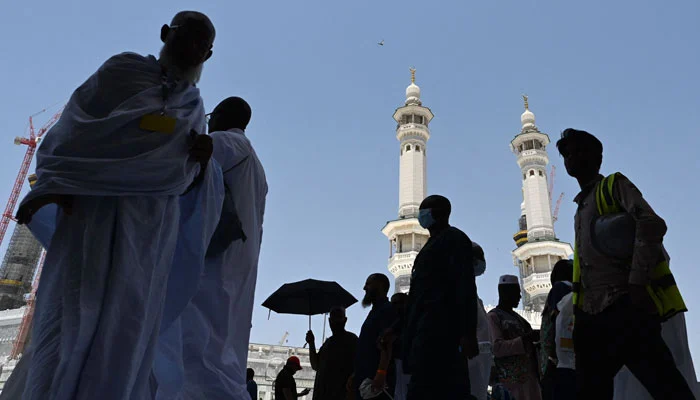Millions head to Makkah as ‘largest Hajj pilgrimage in history’ begins

On Sunday, thousands of robed Muslim faithful began the biggest Hajj pilgrimage in several years by walking around the Kaaba at Makkah’s Grand Mosque.
By late Friday, 1.6 million foreigners had already arrived at the holiest site of Islam, which is expected to host more than two million pilgrims from 160 countries.
An official with the Saudi ministry of Hajj and Umrah predicted that there will be the largest Hajj pilgrimage in history this year.
As a result of his inability to speak with the press, the official spoke on condition of anonymity.
As every day, Muslims around the world pray towards the Kaaba, which was circumambulated on Sunday morning as part of the Hajj ritual.
According to Saeed Abdel Azim, a 65-year-old Egyptian performing the ritual, “I am living the most incredible experience of my life.” It was a dream come true for the retiree, who had saved up for 20 years in order to participate in the ritual.
Hajj is one of the five pillars of Islam and must be performed at least once by every Muslim.
Saudi Arabia’s oil-rich west coast holds four days of religious rites in Makkah and its surrounding areas.
Before Hajj’s climax at Mount Arafat, pilgrims began making their way to Mina, about five kilometres (three miles) from the Grand Mosque.
With food supplies brought in and security forces deployed in the area, Mina, the world’s largest tent city, is ready to receive pilgrims.
On Monday, more pilgrims are expected to arrive in Mina by foot and by air-conditioned buses, creating a vibrant atmosphere.
This is a blessing of great magnitude
There were thousands of pilgrims praying outside the Grand Mosque on carpets decorated with colourful designs, while male pilgrims wore simple white robes. There were ambulances, mobile clinics, and fire trucks scattered throughout the area.
As a result of the Hajj’s security challenges, several disasters have occurred over the years, most recently a stampede that killed up to 2,300 people in 2015.
There have been no major incidents since then, and pilgrims did not anticipate a catastrophe.
Indonesian student Yusuf Burhan, 25, said he could not describe how he felt. It is a great blessing that I will perform the hajj this year. I never imagined that I would be able to do this.”
It is the lunar calendar that is causing this year’s hajj to be timed during the summer, testing the endurance of worshippers during the mostly outdoor ceremony.
In this mountainous city, policemen have conducted foot patrols and set up checkpoints to inspect Hajj permits, protecting themselves from the scorching sun with white umbrellas.
The temperature reached 45 degrees Celsius (113 degrees Fahrenheit) as others splashed water on pilgrims.
Within the Grand Mosque, thousands of paramedics were on standby. Heatstroke, dehydration, and exhaustion will be treated by over 32,000 Saudi health workers.
‘There is not one empty bed in the house’
As the world’s biggest oil exporter, Saudi Arabia is diversifying its economy beyond fossil fuels by promoting the Hajj, which costs at least $5,000 per person.
The number of participants this year will be the largest since before the COVID pandemic, when about 2.5 million took part.
In 2020, at the height of the global outbreak, only 10,000 refugees were allowed, but by 2021, nearly 59,000 had been accepted.
A cap of one million has been removed from last year’s program.
Samir al-Zafni, a Saudi businessman, said all his hotels in Makkah and Madinah are full.
This year, none of our 67 hotels has a vacant room, he told AFP.
In 2021, Saudi Arabia abolished a rule that banned women who were not accompanied by a male relative from participating in the pilgrimage.
